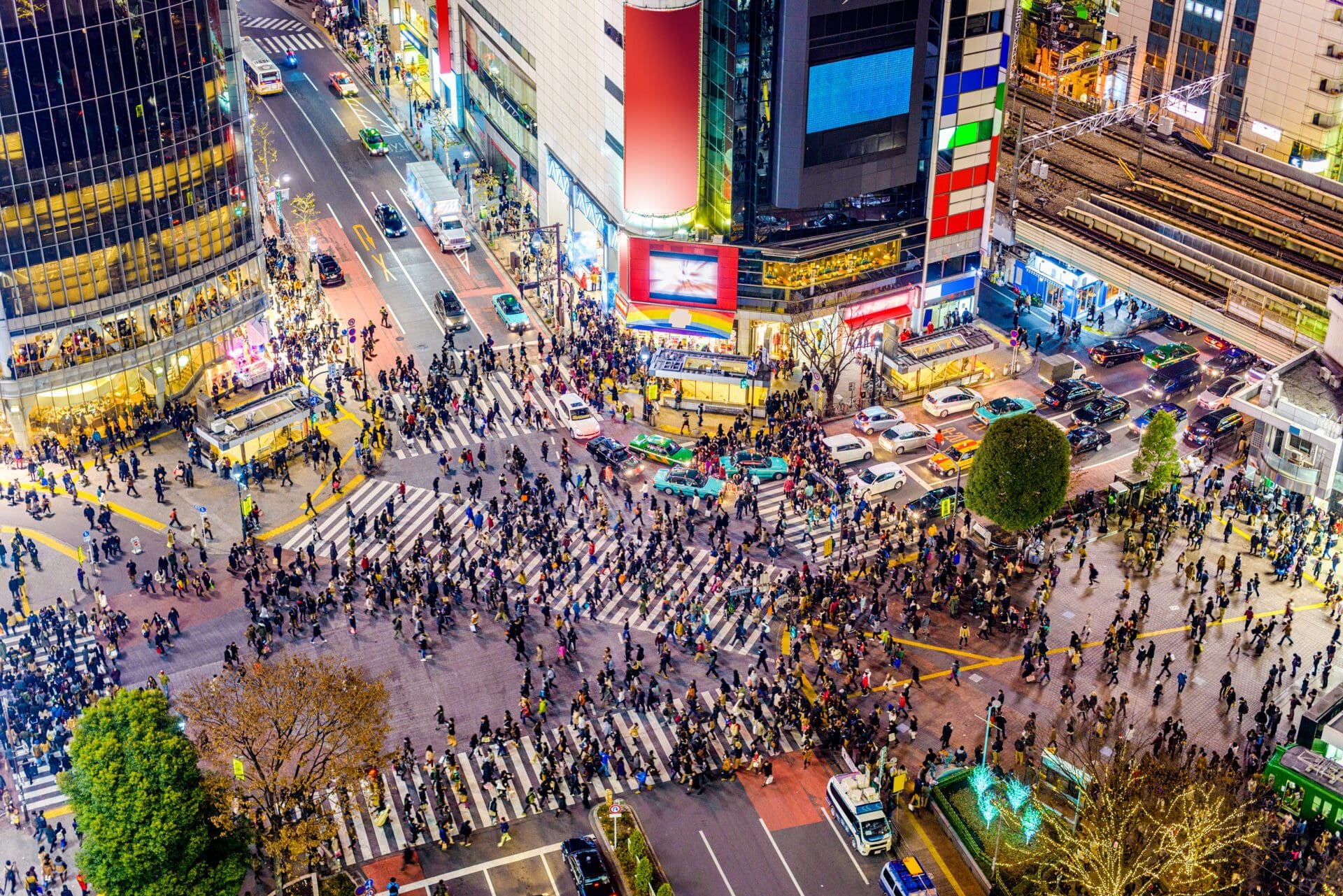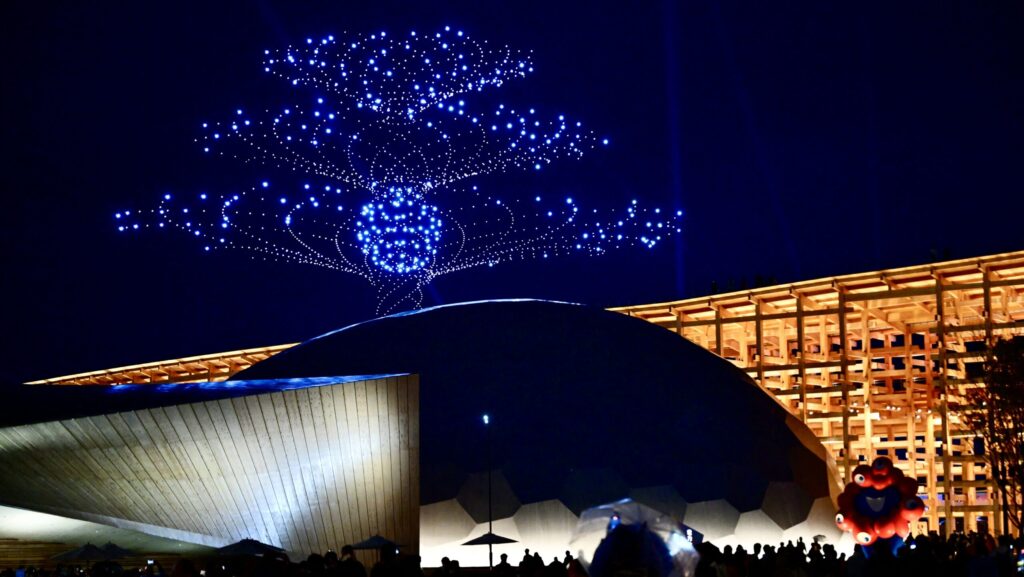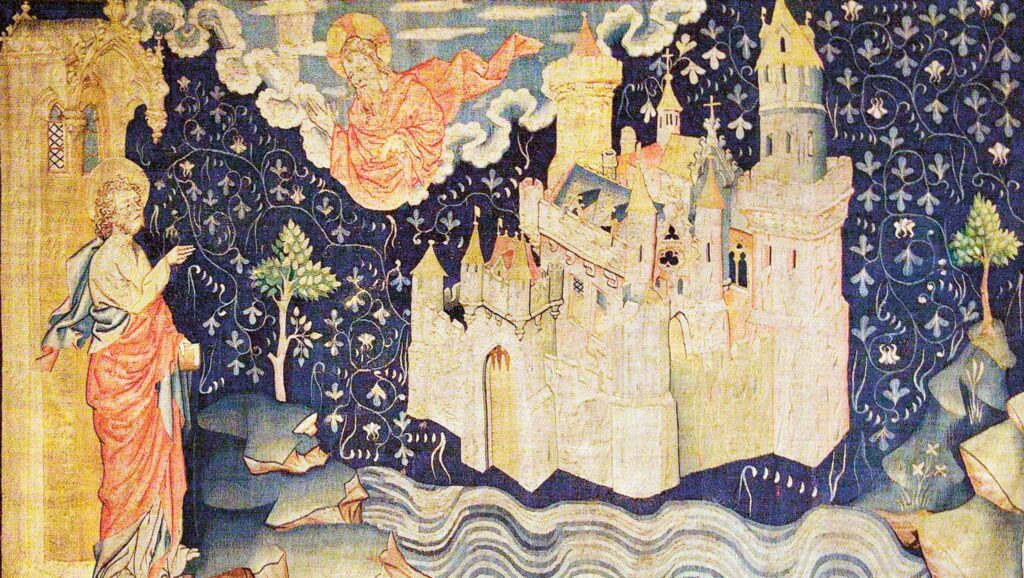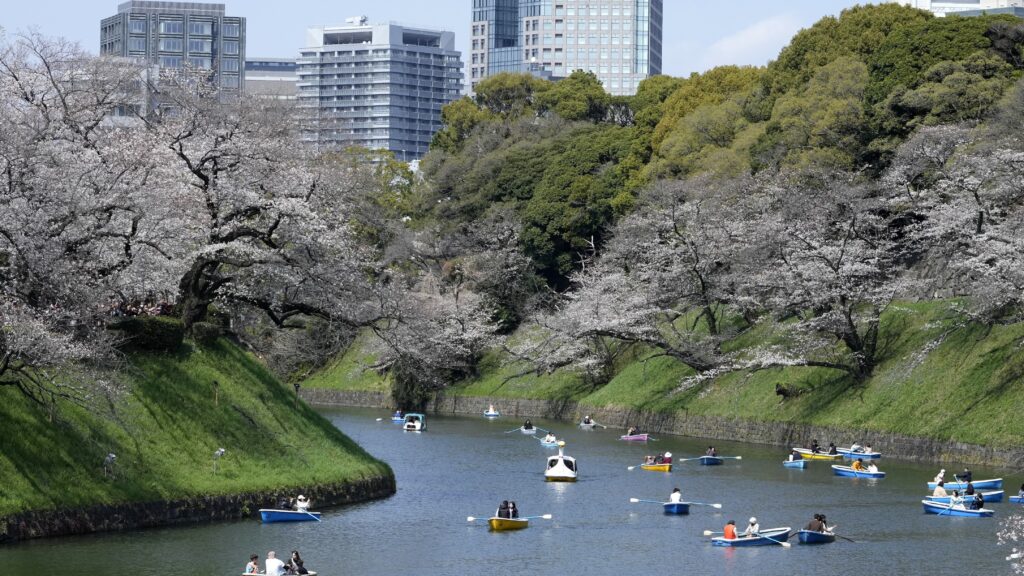Religion has never played a prominent role in post-war Japan, but the motives behind the shocking assassination of Abe Shinzo brought the often-shady relationship between politics and religious groups into the spotlight, pushing the Kishida government into dangerous waters, with one cabinet minister having already resigned. To make matters worse, it looks like this is just the beginning. No one thought that shortly after the sweeping victory of his party in the Upper House election in July prime minister Kishida’s popularity would suffer such a heavy blow and questions would be raised about his survival.
In Europe, Christianity is not only the foundation European culture is built on, but also a dominant ideology in politics, especially on the political right. Nothing demonstrates this better than the number of political parties across the continent that call themselves Christian democratic. The very idea of a united Europe after the tragic world war was partly spawned in the minds and initiated by visionary Christian democrats like Robert Schuman, Konrad Adenauer or Alcide de Gasperi.
A Short History of Religion and Politics in Japan — From Syncretism to the Rise of Shinto
Throughout most of history, Japanese society successfully combined diverse religious traditions. Traditional indigenous Shinto and Buddhism, brought in from the Asian mainland through China and mostly by Chinese monks, peacefully coexisted for centuries. Shinto remained a mostly unorganised and decentralised religion throughout the centuries, with local traditions shaping and strengthening its practice. Japan successfully adapted and further developed Buddhist thoughts, giving birth to new schools and practices, most notably Zen or Nichiren. Christianity arrived in the country during the three hundred years of isolation of the Shogunate. Under the influence of missionaries from Spain and Portugal, Christianity’s popularity constantly grew but was quickly banned by the Tokugawas, as they perceived growing European influence behind new religion imported from the West and viewed the powerful transforming force of Christianity as having the risk of destabilising social harmony and undermining the power of the Shoguns. The Shoguns chose complete isolation (called ‘sakoku’ in Japanese), decoupled Japan from the rest of the world in order to keep out foreign influence and maintain peace and social harmony inside the country. Despite the persecutions, Christianity miraculously survived in the southern parts of Japan. For those who are more interested in this era and the persecution of Christians under the Shogunate, I highly recommend watching Martin Scorsese’s epic work Silence.
Japan went through an unprecedentedly fast, substantial transformation
The ‘Black Ships’ sailing in the Tokyo Bay in 1853 forced Japan to realise that rest of the world had left them standing. There was real fear in the air for Japan that they would follow the fate of other Asian countries colonised by European maritime powers. The following two decades were a remarkable time in the history of Japan. The need for change swept away the Tokugawa shogunate, and Japan went through an unprecedentedly fast, substantial transformation in the following few decades. The young and ambitious new leaders of the Meiji era (Meiji referring to the emperor ruling Japan between 1868 and 1912) understood the imperative of the time: either colonise or get colonised. The Meiji reforms were revolutionary and transformed Japan from an underdeveloped Asian country into a developed, industrial ‘Western power’. ‘Leave Asia, join the West’ (脱亜入欧) was one of the leading slogans of the Meiji era.
The Meiji reforms had many important consequences for religious life in Japan. First, Christianity as a Western religion became attractive, with many important families, bureaucrats, politicians and industrialists converting to Christianity, mainly Catholicism. One good example is the previous empress, Michiko, who was born into a wealthy Catholic family. Second, as the Meiji reformers learned and implemented Western knowledge about building and running a modern country, they realised the issue of the absence of a unifying state religion and church, such as the Church of England. Although Japan had never known the dominance of any single religious-philosophical tradition, Shinto, the indigenous belief, which is an inalienable essence of the culture and existence of Japan, was there to serve that purpose. It tied in perfectly with the 19th century phenomenon of the strengthening of state nationalisms worldwide. What else could have better served the unity and cohesion of a nation state at the time of the rising of Imperial Japan than an own, domestic religion? Thus State Shinto (Kokka Shintō) was born. Shinto became institutionalised and placed under state control (the Shinto Ministry took over the administration of Shinto shrines), while the divine nature of the emperor was amplified. As nationalism grew strong in the 20th century, following Shinto became the synonym of being Japanese. Visiting Shinto shrines and following Shinto practices became a patriotic duty. Shinto was even included in the school curriculum. Elevating Shinto, however, came with the restriction of other religions, although the 1889 so-called Meiji constitution included a nominal guarantee of religious freedom. The big loser was Buddhism, a religion that was imported from and through China. In syncretistic Japan, Buddhism and Shintoism had lived peacefully together for centuries, often sharing places of worship. It is not uncommon to see Shinto shrines on the premises of Buddhist temples. But in the Meiji era a state-mandated separation of Buddhist and Shinto places of worship started (known as the haibutsu movement), which culminated in a violent suppression of Buddhism and the destruction of Buddhist temples and valuable Buddhist artworks and scriptures.
After the defeat in WWII, the second (and so far, the last) constitution of Japan, drafted by the occupying American forces, reinstalled democracy and religious freedom. Emperor Shōwa (Hirohito) renounced his divinity, state and religion were separated, and State Shinto abolished. It needs to be added that the Japanese emperor still serves as a high priest in Shinto and the rituals of the Imperial Court involve many Shinto elements.
Religion-Based Parties in Japan
Since the end of the world war, Japanese political life has been mostly dominated by the contest between the conservative Liberal Democratic Party (LDP) and the political left, most of the time with the LDP in power. Religious parties have never achieved significant influence in politics, but some made fairly successful attempts at it. The most notable example of a significant political party with a religious background is Komeito, originally founded in 1964, a conservative political party mostly representing the lower middle class, founded by the lay Buddhist organisation Soka Gakkai. The name may ring a bell even with readers not particularly interested in Japanese Buddhism, as the group is an internationally active organisation, with many notable celebrities like Tina Turner or football player Robert Baggio identifying as followers of Soka Gakkai. Komeito is a long-standing ally of the Liberal Democratic Party. The two parties live in a mutually beneficial symbiosis that is especially valuable during election campaigns. The nature of the relationship between the LDP and Komeito is a bit similar to the one between Fidesz and the Christian Democratic Party (KDNP) in Hungary, with one notable difference: in Japan, the two parties run independently in elections.
The other example that needs to be mentioned is the infamous cult, Aum Shinrikyō, whose members committed the hideous sarin gas terror attack in the Tokyo subway on 20 March 1995. Before turning to terrorism, Aum members ran in national and local elections without any success. Their story would deserve a separate article. Albeit having tried to gain seats in the national parliament, Aum remained an outsider organisation, with no direct or indirect connection to mainstream political parties.
According to surveys, Japan is one of the most non-religious societies, although a perhaps better definition would be that it is the most religious atheist country in the world. Nevertheless, religious groups, as other interest groups, are of course active in the nation’s political arena, but this activity has never been in the forefront.
Ties Between Politics and Religion Came into Spotlight with the Assassination of Abe Shinzo
After the shocking murder of Abe Shinzo earlier this year, the murky and untransparent intertwining between politics and religious groups suddenly came to the surface. Most notably, the shady Unification Church was exposed. The church became famous worldwide for its mass weddings, where couples who had not met before are wed. The Unification Church was founded in 1954 in South Korea by the eccentric Reverend Moon Sun Myung, whose adherents are known as ‘Moonies’. Moon’s teachings are a controversial mix of Christian and Confucian beliefs highlighting marriage and family values. Former Prime Minister Abe Shinzo was assassinated by a Unification Church member’s son whose name I will deliberately not write down, as he does not deserve to be remembered or glorified. The man held a grudge against the church and believed Abe was a supporter of it. Rumour has it that he had originally planned to go to South Korea to take revenge on a church leader, but due to Covid travel restrictions he had to choose a domestic target, and that’s how he gunned down Abe in the end. The murderer’s mother was a devout follower of the cult and donated a total of a hundred million yen to the shady religious group, ruining family finances and her family’s existence and future as well. The assassination drew attention to the questionable practices often called ‘spiritual sales’ of the Unification Church, now formally known as the Family Federation for World Peace and Unification. The fundraising practices of and the abuse of followers by the church were especially salient in Japan, where the cult has six hundred thousand followers. Japan has been the money-making machine of the church for decades as a result of the predatory sales practices that lay great emphasis on ‘ancestral karma’. Adherents in Japan pay large sums in exchange for absolution from the sins of their ancestors committed historically against Koreans, most notably during the Japanese occupation of the Korean peninsula between 1910 and 1945. The cult founder has also created the shady concept of Japan and Korea being the yin and the yang and has claimed to be working towards bringing together the two nations. There was even a plan to build an undersea tunnel between the two countries that would have become a symbol of friendship. The unrealistic and unfeasible project was scrapped, probably for good, after Abe’s murder.
Abe’s murder brought a lot of dirt to the surface
Although Abe had no formal ties to the obscure religious group, his murder brought a lot of dirt to the surface, not only on how the church abused thousands of its followers with predatory sales tactics, but how deep its influence over the LDP was. Kishida has wowed to investigate the matter and cut his parties ties to the defamed church. But as the investigation progressed, skeletons started falling out of the closet. It was soon revealed that about half of the 379 LDP lawmakers have some connection to the Unification Church. It was established that in the case of numerous LDP lawmakers the church had been instrumental in them winning their seats. Religious groups, especially sects and cults, have a very disciplined and obedient membership that can be extremely useful during electoral campaigns and elections. Since the Unification Church champions very strict conservative values (it is anti-LGBT, pro-family and pro-marriage), its members constituted a natural political base for the conservative LDP. During elections such support can be crucial, especially when only a few hundred votes decide the fate of a parliamentary seat. Many LDP parliamentarians admitted that without the help from the church they wouldn’t have won their mandates. The nature of and degree of the connection between LDP lawmakers and the church varied, in most cases being limited to sending greeting messages to or holding speeches at church events. To the defence of politicians, I have to add that in the Japanese political system it is next to impossible to win or hold a parliamentary seat in a single seat district without catering for local interest groups, including religious groups. One of the accusations against former prime minister Abe was that he sent a video message to a church gathering. Japanese politicians, especially prime ministers, whether former or in office, do that in the hundreds during holiday seasons. Yamagiwa Daishiro, a cabinet minister who just recently stepped down as he became a burden for Kishida due to his ties to the church, told reporters to his defence that he didn’t remember attending church events, because in the past twenty years as a lawmaker, he attended thousands, or tens of thousands of gatherings, and it is hard to remember every one of them.
As the scale of the interlinkage between his party and the unpopular church was becoming obvious, Kishida felt the heat and was forced to take action. Lucky for him, he and his faction, the Kochikai remained mostly untouched by the Unification Church scandal. (Note: the LDP is not a monolithic party. It was originally set up after the merger of the Liberal and the Democratic parties in 1955. The LDP is so diverse politically that its various factions act like different political parties within a party.)
Because due to significant constitutional restrictions state authorities have limited tools to go after religious groups, the government initially handled the scandal as a consumer safety issue and tasked the Consumer Affairs Agency to look into the practices of the Moonies. Later, as the scandal grew bigger, Prime Minister Kishida instructed the culture minister to investigate the Unification Church, given that the government has received more than 1,700 consultation requests from abused church members over twenty-five days since a telephone hotline was set up early September.
A group of Japanese lawyers has lobbied the government to seek a court order to disband the Unification Church. It would be a rare move, as such action was only resorted to twice in Japan. One instance was the cult mentioned earlier in the article that committed the sarin gas terror attack in 1995. The other was the Myokakuji temple group based in Wakayama Prefecture.
The Unification Church scandal and his decision to hold a state funeral for Abe have cost Kishida a lot politically. While Kishida’s approval rating climbed to as high as 70 per cent earlier this year, now, due to the growing scandal, it has plummeted to below 30 per cent, which is considered the danger zone in Japanese politics. According to political customs in Japan, when a prime minister’s support rate goes below 30 per cent, the expectations of his resignation grow strong, often becoming a self-fulfilling prophecy. So far, Kishida managed to survive, but his government has already suffered its first casualty. On 24 October Kishida was forced to accept the resignation of Yamagiwa Daishiro, the economic revitalisation minister, who has been accused of having close ties with the contentious Unification Church. Yamagiwa may be just the first victim, and we may see more dominoes fall. Losing Yamagiwa is especially inconvenient for the prime minister, as he was appointed to this position in October 2021 to oversee Kishida’s flagship ‘new capitalism’ policies. Kishida is now caught in the crossfire, with both opposition and possible contenders inside his own party smelling blood. Although it is unlikely that his opponents within the party and in the opposition have a real intention of ousting his government in the near future, given that national elections are not due in the next three years, keeping Kishida under fire for as long as possible to weaken him can be a sensible tactic for the otherwise weak and fragmented opposition.
Kishida seems to be paying the price for other people’s mistakes
Kishida didn’t plan it this way and things looked different back in July, only a few months ago. There is no national election in sight in the next three years, and analysts had predicted ‘three golden years’ for him after the victorious Upper House election. Then it quickly became obvious that the next three years would be anything but golden for Kishida. In the short run, the most Kishida can achieve is avoid the fate of Liz Truss, the short-lived former prime minister who was forced to step down after policy failures and turnarounds. Kishida seems to be paying the price for other people’s mistakes as he had zero ties to the scandalous church. However, as the head of the ruling party and of the government, he is to take the blame. What Kishida can now do is wait until the storm is over and try to navigate his ship in the rough waters of Japanese politics.
But, looking beyond Kishida’s fate, the moral of the story is that it is never a good idea for a political party, especially not for a conservative one, to be associated with obscure religious groups. They can deliver effective help in the short term, but at the end of the day, the price to be paid can be extremely high.








